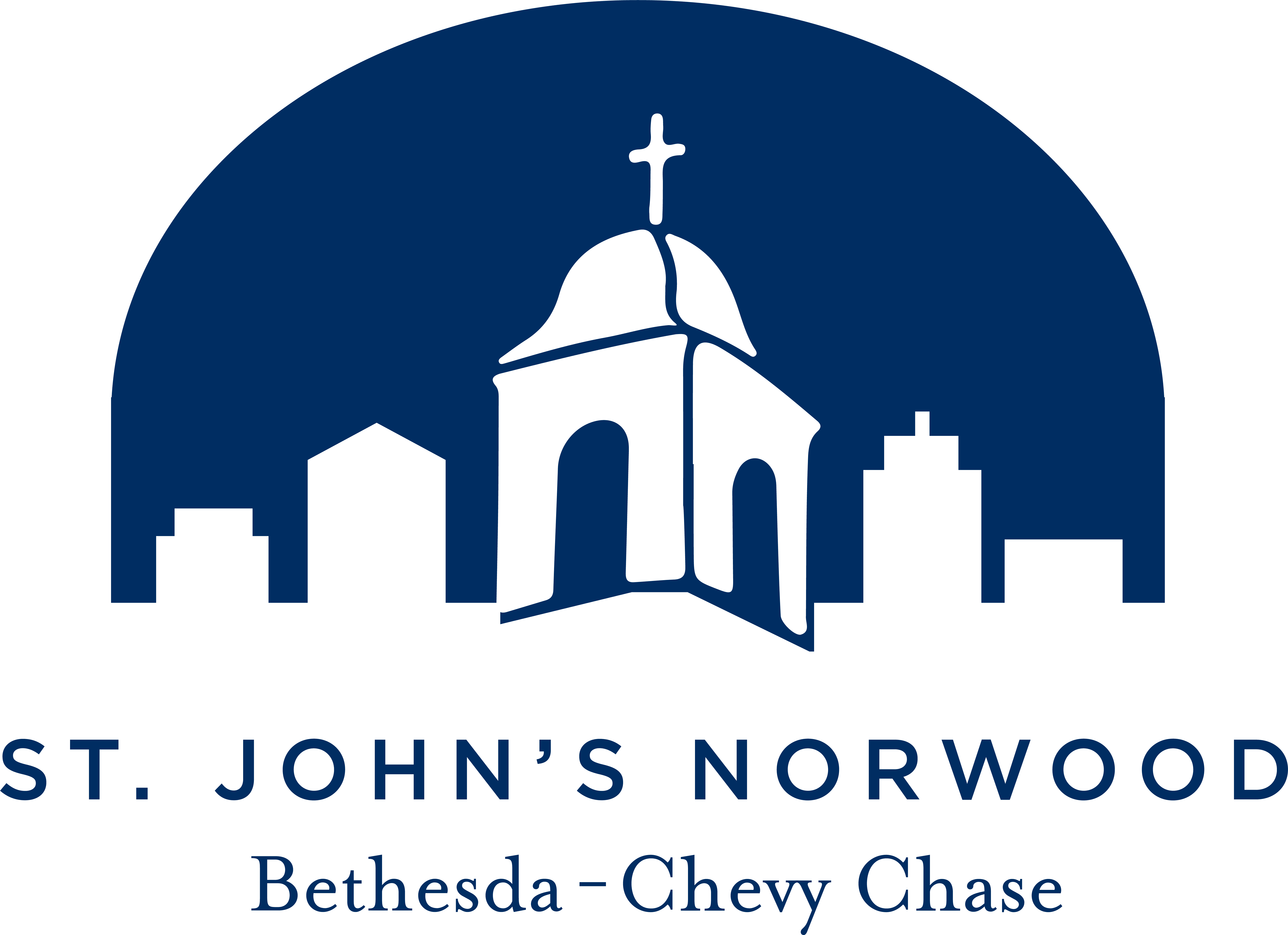One of my favorite features of the Washington National Cathedral is this relief sculpture, titled “Ex Nihilio,” which is Latin for "out of nothing." Located in the typanum over the central doors of the west-facing side of the Cathedral, it greets visitors as they enter the doors. The sculptor, Frederick Hart, captures God’s creation of humankind showing the forms of four men and four women out of nothingness. (1)
[Pictured at left: "Ex Nhilio" by Frederick Hart. Photograph by Tim Evanson. Copyright license: Creative Commons Attribution-ShareAlike 2.0 Generic]
Most Cathedrals feature traditional image of judgment and destruction at their entrances; however the crafters of the Washington National Cathedral wanted the guest experience to begin with the story of creation, which emphasizes a message of love, (2) affirming one of God’s first acts of creation, as we hear in the story in the book of Genesis 1:27:
Humankind was created as God’s reflection:
in his divine image God created them;
[The Inclusive Bible: The First Egalitarian Translation, Rowan and Littlefield Publishers, Inc., 2007]
I see this sculpture almost daily in my life at National Cathedral School. Today I’m reminded of three things: the first is that every human being is created in God’s image, meaning that all human beings should be treated with dignity and respect. Amidst the growing culture of contempt (3) in our society, this cornerstone of Christian faith is central to our identity and has been a common theme in several recent Sunday sermons, inviting us to consider how we treat our neighbors and ourselves.
The second insight comes from a recent review of the Episcopal Church’s Catechism, written in its traditional question and answer format:
Q. What does it mean to be created in the image of God?
A. It means that we are free to make choices: to love, to create, to reason, and to live in harmony with creation and with God.
[The 1979 Book of Common Prayer, pg. 845]
The half-formed humans emerging from chaos reminds me of the way that we humans behave. Much of our human existence is lived in the space between stimulus and response. The “freedom” comes in the space when we have the capacity to make choices. On my good days, I lean into that space and try to extend the distance between the two, allowing me to increase my awareness of the forces at play and choose, as the Catechism suggests: to love, to create, to live in harmony with creation and God. What wonderful possibilities exist in that space!
► How might you notice the space between stimulus and response this week and allow for space (or freedom) to choose a response that most authentically reflects your values, beliefs, and faith?
Finally, I’m reminded of the fierce beauty of creation that I see in the sculpture, itself, and in the world around me. I chose it for today’s reflection as I enter my final week as your Interim Sabbatical Rector at St John’s. Walking alongside you over these weeks has brought beauty and enjoyment. The love you share with each other in your gatherings for worship, fellowship, and service beyond the doors of the Church is truly beautiful. I have treasured our time and connections made with many of you, and in the midst of it all, I’ve had a lot of fun!
Thanks, and I’ll see you in Church,
Eva+
